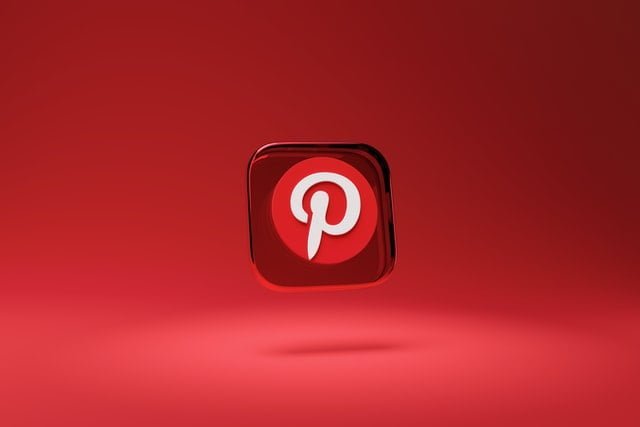التسويق بالعمولة Pinterest(التسويق التابع)

التسويق بالعمولة Pinterest(التسويق التابع)
لقد كان Pinterest موجودًا منذ أكثر من عقد ، حيث قام ببناء عدد كبير من المتابعين على مر السنين. لقد أصبح أيضًا ليس فقط منصة وسائط اجتماعية ولكن أيضًا أداة تسويق لا تقدر بثمن.
وقد سجل 431 مليون مستخدم نشط شهريًا في جميع أنحاء العالم في الربع الرابع من عام 2021. وفي يناير 2022 وحده ، سجل الموقع ما مجموعه 980 مليون زيارة ، مما يشير إلى زيادة بنسبة 3.84٪ مقارنة بـ 943.7 مليون مشاهدة في ديسمبر 2021.
المنصة هي في الأساس محرك بحث مرئي. Pinterest هي لوحة إلهام رائعة – حيث يبحث الأشخاص عن أفكار ومراجع للمشاريع والعطلات والأزياء والمزيد. إنها أيضًا مساحة حيث يمكن للأشخاص تخطيط مشترياتهم والبدء في اتخاذ قرارات الشراء.
هذا يجعل Pinterest طريقة قابلة للتطبيق للتسويق بالعمولة – جمهورك موجود بالفعل لديه اهتمام أو نية للشراء. كل ما عليك فعله هو منحهم دفعة في الاتجاه الصحيح. يستكشف هذا الدليل كيف يمكنك الاستفادة من Pinterest لتحقيق دخل إضافي في عام 2022. لقد قمنا بتضمين بعض النصائح العملية وأفضل الممارسات لمساعدتك على البدء.
Pinterest ولماذا هي أداة تسويق تابعة رائعة
تُعرف منشورات Pinterest باسم “الدبابيس” أو الصور أو مقاطع الفيديو التي ترتبط بموقع ويب خارجي. يقوم المستخدمون بحفظ هذه الدبابيس في لوحاتهم ، مما يسمح لهم بإنشاء وتنظيم لوحة عصف ذهني عبر الإنترنت.
عند استخدامها كأداة تسويق تابعة ، تسمح Pinterest للمسوقين بتوسيع مدى وصولهم عن طريق زيادة الوعي بالعلامة التجارية. إنها أيضًا منصة مثالية لعرض منتجاتك الموصى بها بطريقة تلهم مستخدمي النظام الأساسي وتشجعهم على الشراء.
Pinterest مقابل Facebook و Instagram
انتظر ، يعرض الصور ومقاطع الفيديو ، ويمكنك أيضًا الإعجاب بالمشاركات ومشاركتها؟ إذن ، كيف تختلف عن منصات التواصل الاجتماعي الأخرى مثل Facebook أو Instagram؟
بينما يسمح لك Facebook بنشر وترويج الصور ومقاطع الفيديو (سواء الخاصة بك أو الخاصة بشخص آخر) ، فإن النظام الأساسي لا يتعلق فقط بالمحتوى المرئي. يركز Instagram ، بالإضافة إلى كونه منصة مرئية ، على المحتوى الذي تنشئه بنفسك.
وفي الوقت نفسه ، يتيح Pinterest للمستخدمين تحميل ومشاركة دبابيسهم الخاصة. يمكنهم أيضًا تصفح أكثر من 240 مليار دبوس على النظام الأساسي وإضافتهم إلى لوحة القيادة الخاصة بهم.
إحدى الميزات التي تتمتع بها Pinterest على منصات الوسائط الاجتماعية الأخرى عندما يتعلق الأمر بالتسويق بالعمولة هي طبيعتها المرئية. إنه يشبه محرك بحث مصمم خصيصًا للصور ومقاطع الفيديو. على سبيل المثال ، إذا كنت تبحث عن “الموضة المعاصرة” ، فمن المحتمل أن تصادف شيئًا كهذا:
كما ترى ، يركز المحتوى بشدة على الصور القابلة للنقر. عندما تحوم فوق إحدى هذه الصور ، فإنها تعرض ارتباطًا خارجيًا يمكنك زيارته.
لا يقتصر موقع Pinterest على الصور ومقاطع الفيديو فقط. ستجد أيضًا دبابيس بها روابط إلى البرامج التعليمية والمقالات والمزيد.
على سبيل المثال ، يؤدي البحث عن “كيفية خياطة فستان خطوة بخطوة بنفسك” إلى عرض النتائج التالية:
جميع الصور هنا مرتبطة بمواقع خارجية أو منشورات مدونة. هل ترى شيئًا يعجبك؟ انقر فوق هذا الدبوس لزيارة الرابط الخارجي.
نظرًا لتشابهها مع محركات البحث التقليدية ، يمكنك أيضًا تطبيق مبادئ تحسين محركات البحث (SEO) لتحسين تصنيفات البحث الخاصة بك ودفع حركة المرور إلى روابطك.
استمرار شعبية موقع Pinterest
نظرًا لكونها واحدة من أكثر قنوات التواصل الاجتماعي شهرة ، تزداد شعبية Pinterest بين جيل الشباب. يتبنى المزيد من مستخدمي جيل الألفية وجيل Z المنصة ، وتشكل النساء غالبية جمهورها. في عام 2020 ، استخدم 80٪ من جيل الألفية الأمريكيين Pinterest و 4 من كل 5 أمهات أمريكيات (أي 80٪ أخرى) كن مستخدمين نشطين لموقع Pinterest. على الصعيد العالمي ، تشكل النساء أكثر من 60٪ من جمهور المنصة .
في عام 2020 ، زادت المشتريات على المنصة بنسبة 50٪ . بالإضافة إلى ذلك ، فإن 29٪ من Pinners ، وهو مصطلح آخر لمستخدمي Pinterest ، يكسبون ما بين 50000 دولار و 74999 دولارًا ، بينما يكسب 40 ٪ أكثر من 75000 دولار سنويًا. هذه أرقام مهمة نسبيًا مقارنة بالمنصات الأخرى مثل Twitter و Reddit و Snapchat ونعم ، حتى TikTok. أيضًا ، تشير هذه الأرقام إلى أن Pinners يتمتعون بقوة شرائية عالية.
يلجأ أكثر من نصف مستخدمي Pinterest إلى النظام الأساسي لإلهام التسوق ، حيث يكون التسوق على رأس أولوياتهم بنسبة 48٪. يبحث المستخدمون عن شيء ما وهم على استعداد لتلقي التوصيات. إنهم يبحثون بنشاط عن الأفكار والحلول ويقضون في المتوسط 5 دقائق و 18 ثانية على الموقع. في المتوسط ، يتصفح المستخدمون 5.26 صفحة في كل زيارة.
يمنحك هذا الكثير من الفرص لتوجيه كل هذه النية وتحويلها إلى فرصة تسويق تابعة .
التسويق بالعمولة بينتيريست
في التسويق بالعمولة ، تروج الشركة التابعة لمنتجات أو خدمات الشركة وتتلقى عمولة عندما يقوم شخص ما بعملية شراء باستخدام الرابط التابع لها. يعمل التسويق بالعمولة مع Pinterest بطريقة مماثلة. أنت توصي بالسلع أو الخدمات التي يمكن لجمهورك شراؤها مقابل عمولة على المعاملات الناجحة.
في حين أنه قد يكون من المغري – والسهل نسبيًا – الغوص في استخدام Pinterest للتسويق بالعمولة ، إلا أن هناك بعض الأشياء التي يجب وضعها في الاعتبار:
عند استخدام Pinterest للتسويق بالعمولة في عام 2022 ، تحتاج إلى تحديد أهدافك أولاً. تأكد من أنها واضحة وواقعية وممكنة. هل ترغب في اكتساب المزيد من العملاء المحتملين للشركة التي تعمل معها أم ترغب في تنمية ولاء الجمهور؟ هل تتطلع إلى زيادة الوعي بالعلامة التجارية لكل من النظام الأساسي الخاص بك والشركة التي تنتمي إليها؟
يكون Pinterest مفيدًا بشكل خاص إذا كنت تعمل باستخدام عناصر ثقيلة بصريًا. تتضمن بعض المنافذ الأكثر شيوعًا على المنصة ما يلي:
- يسافر بواسطة
- طعام
- الصحة والجمال
- الحرف اليدوية تفعل ذلك بنفسك
- تزيين المنزل
إذا كنت جديدًا في مجال التسويق بالعمولة ، فمن الأفضل إنشاء مكان مناسب قبل الانضمام إلى أحد البرامج التابعة . إذا كنت بالفعل جزءًا من برنامج تابع ، فلا يزال بإمكانك استخدام Pinterest للترويج لعروض الشركات التابعة.
كيفية إضافة الروابط التابعة إلى Pinterest
لتبدأ في التسويق بالعمولة Pinterest ، تحتاج إلى معرفة كيفية إضافة الروابط التابعة إلى النظام الأساسي. لحسن الحظ ، من السهل إضافة الروابط التابعة إلى Pinterest.
قم بإنشاء ملف تعريف عمل على Pinterest. إذا كان لديك بالفعل ، فانتقل إلى صفحة ملفك الشخصي . انتقل إلى علامة التبويب إنشاء وحدد إنشاء رقم التعريف الشخصي . يمكنك أيضًا استخدام أدوات الجهات الخارجية مثل Tailwind أو Buffer لإنشاء الدبابيس وجدولتها.
هذا هو المكان الذي يمكنك فيه استخدام مُحسّنات محرّكات البحث لتحسين المحتوى الخاص بك.
أضف تفاصيل مثل عنوان الدبوس والوصف وقم بتحسينه لـ SEO من خلال دمج الكلمات الرئيسية ذات الصلة والمستهدفة. على سبيل المثال ، إذا كنت تروّج لأحذية رياضية ، فاستخدم كلمة رئيسية محددة مثل “أحذية رياضية كلاسيكية” أو “أحذية رياضية أديداس” لتضييق نطاق البحث عن منتجك. تجنب حشو الكلمات الرئيسية وتأكد من التركيز على كلمتين أو ثلاث كلمات رئيسية ذات صلة بمنشورك.
تأكد أيضًا من أن الأوصاف الخاصة بك مفصلة وثاقبة. اجعلهم جزءًا من الحل: تذكر أن مستخدمي Pinterest على النظام الأساسي يبحثون عن شيء ما. امنحهم الإجابات أو الإلهام الذي يحتاجون إليه باستخدام أوصافك. يمكنك استخدام علامات التصنيف ذات الصلة لتسهيل اكتشاف دبابيسك.
ملاحظة سريعة حول استخدام علامات التصنيف على Pinterest: هناك احتمال أن تقوم خوارزمية النظام الأساسي بإخفاء المنشورات التي تحتوي على علامات التصنيف . وذلك لأن مرسلي البريد العشوائي غالبًا ما يستخدمون وسوء استخدام علامات التصنيف.
إذا كنت جزءًا من شبكة تابعة ، فقد تتلقى رقم تعريف شخصيًا محددًا مسبقًا. بخلاف ذلك ، لا تتردد في إنشاء الخاصة بك ، مع التأكد من اتباع إرشادات Pinterest والشبكة التابعة. على هذا النحو ، تعد علامات التصنيف اختيارية تمامًا على النظام الأساسي.
لا تنس إضافة رابط الإحالة الخاص بك في رابط الوجهة . يمكنك الحصول على روابط من الشبكة التابعة الخاصة بك. إذا كنت أحد شركاء Amazon ، فيمكنك استخدام SiteStripe لإنشاء ارتباط.
عند إضافة الروابط التابعة ، ضع في اعتبارك استخدام الروابط التي تؤدي إلى الصفحات المقصودة بدلاً من الروابط التابعة المباشرة. الآن ، هذا لا يعني أنه يجب عليك التوقف عن استخدام الروابط التابعة المباشرة. من السهل استخدام الروابط الداخلية للجهات التابعة ، وهي تأخذ المستخدمين مباشرةً إلى المكان الذي تريدهم أن يذهبوا إليه. ومع ذلك ، قد يشعر بعض المستخدمين بالقلق بشأن الروابط المباشرة إلى مواقع لم يعرفوها بعد. في بعض الأحيان ، يمكن أن تؤدي هذه الروابط إلى صفحات لا تحتوي على معلومات كافية ، مما قد يؤدي إلى إبعاد المستخدمين.
يرجى ملاحظة أن استخدام أدوات تقصير الروابط يتعارض مع سياسة Pinterest.
قم بإنشاء رسومات جذابة.
عند إنشاء مخططات دبوس ، ضع في اعتبارك أن Pinterest هو في الأساس محرك بحث مرئي. يجب أن تشجع صورتك المستخدمين على النقر عليها.
يتم توجيه صور دبوس Pinterest عموديًا ، باتباع نسبة عرض إلى ارتفاع قياسية 2: 3 . حجم الصورة الأمثل للمنصة هو 1000 × 1500 بكسل . يمكن قص أي شيء أكبر ، مما قد يؤثر سلبًا على أداء PIN.
عند إنشاء الصور ، تأكد من استخدام صور لافتة للنظر. إذا كنت تضيف نصًا إلى الصورة ، فاستخدم أنماطًا يسهل قراءتها.
لديك خياران لنشر رقم التعريف الشخصي: “النشر فورًا” أو “النشر لاحقًا”.
الاستفادة من Pinterest للتسويق بالعمولة في عام 2022
قم بإنشاء حساب أعمال Pinterest
كما هو مذكور أعلاه ، تحتاج إلى إعداد ملف تعريف أعمال Pinterest الخاص بك. إذا كان لديك بالفعل حساب Pinterest شخصي ، فيمكنك تحويله إلى حساب تجاري. للقيام بذلك ، قم بزيارة موقع Pinterest Business . انقر فوق إنشاء حساب .
ستتم إعادة توجيهك إلى صفحة تسجيل حيث سيكون لديك خيار إنشاء حساب أعمال أو تسجيل الدخول إلى حسابك الحالي على Pinterest.
يختلف حساب Pinterest Business الخاص بك عن حسابك القياسي في أنه يمنحك الوصول إلى أدوات التحليل والإعلان ، بما في ذلك رؤى الجمهور وتتبع المشاركة وأداء التثبيت. كما يسمح لك بإنشاء الإعلانات الخاصة بك.
استعد لإنشاء الكثير من الألواح والدبابيس.
إن الشيء العظيم في Pinterest هو أنه لا توجد قيود على عدد الدبابيس التابعة التي يمكنك إنشاؤها ، لذلك يمكنك إنشاء دبابيس متعددة لافتة للنظر لكل منشور. تذكر أنه يجب عليك الترويج للمنتجات ذات الصلة بمكانتك وجمهورك. لا يضمن هذا وصولك إلى جمهورك المستهدف فحسب ، بل يساعد أيضًا في جعل مشاركاتك أكثر توافقًا مع موضوعك أو مكانتك.
في حين أن تنوع المحتوى مرحب به دائمًا ، فأنت لا تريد مجرد مشاركة الروابط التابعة. تذكر: تريد أن تقدم لجمهورك المستهدف حلاً لنقاط ضعفهم. قد يؤدي الترويج لإكسسوارات الحيوانات الأليفة أثناء العمل في مجال الصحة واللياقة البدنية إلى إرباك جمهورك.
بمجرد إنشاء دبوس ، ستحتاج إلى إنشاء إطار مناسب له. اللوحات عبارة عن مجموعات تحتفظ فيها بدبابيسك الخاصة. تأكد من أن المنتدى الخاص بك وثيق الصلة بالمجال الذي تتواجد فيه حتى تتمكن من جذب جمهورك المستهدف. بمجرد أن تتعود على الأمر ، يمكنك إنشاء المزيد من اللوحات لتغطية الموضوعات ذات الصلة في مكانتك.
على سبيل المثال ، أنت في مجال الصحة واللياقة البدنية. يمكنك إنشاء لوحة للتمارين المنزلية ، ولوحة منفصلة للوصفات الصحية ، وأخرى لبدائل الطعام الصحي.
أضف بضعة إطارات كل شهر لإخبار خوارزمية Pinterest أن حسابك لا يزال نشطًا.
إذا كان لديك موقع ويب ، فهذا مكان رائع لإنشاء محتوى قيم ذي صلة بما تروج له. يريد المستخدمون الوصول إلى شيء يضيف قيمة.
على سبيل المثال ، يمكنك إنشاء منشور مدونة ونشره على موقع الويب الخاص بك. يمكن أن تكون مراجعة للمنتج أو برنامج تعليمي مفصل يسلط الضوء على منتجك التابع. ولكن عند إنشاء محتوى لمنتج تابع ، من المهم أن تتحلى بالصدق والشفافية.
الآن بعد أن غطيت الأساسيات ، فإن الخطوة التالية هي التركيز على النمو. يمكنك القيام بذلك عن طريق متابعة ملفات التعريف الأخرى ، أو مشاركة المحتوى الشائع ، أو الانضمام إلى لوحات المجموعة. بمجرد دخولك إلى لوحة المجموعة ، سيتم أيضًا إضافة جميع متابعيك إليها.
هذه طريقة جيدة للحصول على معلومات حول ملفك الشخصي ، وبالتالي حول أظافرك. فقط تأكد من الانضمام إلى مجالس المجموعة ذات الصلة بمكانتك أو اهتماماتك.
يمكن أن تساعدك جدولة ظهور الدبابيس الخاصة بك في الأوقات المثلى على الوصول بشكل أفضل إلى جمهورك المستهدف. بالإضافة إلى ذلك ، لا داعي للقلق بشأن تفويت فرصة نشر محتوى جديد. كما يتيح لك زيادة وقتك إلى أقصى حد حتى تتمكن من التركيز على إنشاء منشورات أكثر صلة أو صلة بالموضوع.
تحسين المحتوى الخاص بك لكبار المسئولين الاقتصاديين
يشبه Pinterest محرك البحث ، لذلك من المنطقي استخدام تقنيات تحسين محركات البحث لتحسين مشاركاتك. استخدم أدوات الطرف الثالث لإجراء بحث عن الكلمات الرئيسية. تتضمن الأشياء الأخرى التي يمكنك القيام بها لجعل دبابيسك أكثر ملاءمة لتحسين محركات البحث:
- حافظ على ملفك الشخصي مرئيًا. تحقق من إعداداتك للتأكد من أن ملفك الشخصي ليس مخفيًا عن محركات البحث.
- حافظ على دبابيسك وألواحك منظمة.
- ابحث عن كلمات رئيسية ذات صلة في مكانتك: ما الكلمات الرئيسية التي يستخدمها جمهورك المستهدف عند البحث عبر الإنترنت؟
- حاول تضمين كلمات رئيسية ذات صلة في ملفك الشخصي ، ووصف الدبوس ، ووصف اللوحة.
- ضع في اعتبارك إضافة كلمات رئيسية طويلة الذيل.
تفاعل مع جمهورك
لا تنس أن Pinterest لا تزال شبكة اجتماعية ، لذا من المفيد التواصل مع مستخدمين آخرين. هذا يعني الرد على التعليقات ، أو الرد على المنشورات ذات الصلة ، أو التعليق على الدبابيس الأخرى ، أو اتباع أدوات التثبيت الأخرى في مجال تخصصك.
حلل أداء دبابيسك
وغني عن القول أنه يجب عليك تتبع وتحليل أداء دبابيسك. اكتشف أي الارتفاعات تؤدي إلى زيادة المشاركة وحركة المرور وأيها تحتاج إلى تحسين. لحسن الحظ ، يمكن إجراء تتبع أداء الدبوس على صفحة Pinterest Business من خلال Pinterest Analytics. إذا كنت تريد أن تأخذ لعبة التحليلات الخاصة بك خطوة إلى الأمام ، فلا تتردد في استخدام أدوات التحليلات الأخرى مثل Google Analytics.
ستساعدك معرفة ما يصلح وما لا ينجح في ضبط المحتوى والاستراتيجية لديك ، مما يتيح لك اتخاذ قرارات أفضل وأكثر استنارة.
يعد الاتساق أمرًا أساسيًا عندما يتعلق الأمر بالتسويق التابع لـ Pinterest ، لذا حاول إنشاء عدد قليل من الدبابيس يوميًا أو لوحة واحدة إلى ثلاث لوحات في الأسبوع. أنشئ سير عمل واستخدم أداة جدولة لضمان الاتساق.
أفضل ممارسات التسويق التابعة لـ Pinterest
حدد جمهورك المستهدف
بناء جمهورك هو مفتاح التخطيط لما ستكون عليه دبابيسك. سيحدد من تستهدفه اتجاه أنواع الصور التي يجب عليك تثبيتها ، بالإضافة إلى نوع المحتوى أو المنتجات التي تروج لها. باختصار ، تحتاج إلى إنشاء دبابيس يكون لها صدى مع جمهورك المستهدف وتشركه ، لذلك من الأفضل أن تعرف من هم قبل أن تقضي الوقت والموارد الأخرى في إنشاء الدبابيس الخاصة بك والترويج للمنتجات التابعة.
بينما تتغير الاتجاهات بشكل دوري ، فهي مؤشرات جيدة لما يبحث عنه الناس في أي وقت. استفد من الكلمات الرئيسية الشائعة واستخدم الاتجاهات لمعرفة ما يفعله منافسوك.
تعلم واتبع إرشادات مجتمع Pinterest
تُعد إرشادات مجتمع Pinterest مصدرًا رائعًا للمسوقين التابعين ، سواء كنت مبتدئًا أو خبيرًا. إنه يغطي موضوعات مثل أمان الموقع ، والوصول ، والبريد العشوائي ، وإرشادات العضوية المدفوعة ، والمزيد. تضمن معرفة إرشادات النظام الأساسي حصولك على تجربة آمنة وسلسة على Pinterest.
لا تنسى نشر الروابط التابعة
تطلب لجنة التجارة الفيدرالية (FTC) من التجار الكشف عن الروابط التابعة أو الشراكات المدفوعة لحماية المستهلكين. ضع علامة على دبابيسك وفقًا لعلامات “برعاية” أو “شركة تابعة”.
يعد إخفاء الروابط أو إخفاء الروابط التابعة باستخدام أدوات تقصير الروابط أو عمليات إعادة التوجيه مخالفًا لإرشادات مجتمع النظام الأساسي. عند إضافة الروابط التابعة ، تأكد من استخدام إصداراتها الكاملة. يوضح Pinterest أنه يجب أن يعرف جمهورك ، أو على الأقل لديه فكرة ، إلى أين ستأخذهم روابطك.
حافظ على توصياتك دائمة وذات صلة
تحب خوارزمية Pinners و Pinterest المحتوى الجديد. هذا يعني أنه يجب عليك نشر المحتوى الأصلي. للحفاظ على دبابيسك محدثة ، يمكنك تحديث قوائم المنتجات الجديدة أو مشاركتها بمجرد توفرها.
اختبارات الاتصال صديقك
يتيح اختبار الروابط أو الروابط للمراجعات أو أدلة الشراء للمسوقين التابعين تقديم توصيات إضافية وذات صلة لجمهورهم المستهدف. لإنشاء رابط اختبار ، أنشئ دبوسًا ملفتًا للنظر مرتبطًا بإثبات الشراء. ثم تحقق من أدائها لمعرفة ما إذا كانت قادرة على توليد حركة المرور أم لا. يمكنك أيضًا استخدام هذه الطريقة لقياس حركة المرور إلى مواقع الويب الخاصة بك.
تعرف على قواعد برنامج الإحالة الخاص بك
قد تختلف قواعد البرنامج التابع لمشاركة المحتوى التابع ، لذا يرجى التعرف على إرشاداتهم لتجنب العقوبات أو العقوبات.
الأفكار الأخيرة
Pinterest هي قناة يمكن الوصول إليها للمستهلكين الباحثين عن الإلهام ، وكذلك المسوقين الذين يتطلعون إلى توسيع مدى وصولهم وتحقيق المزيد من الإيرادات. يمكن للمستخدمين الذين يتطلعون إلى كسب دخل جديد أيضًا اللجوء إلى Pinterest للتسويق بالعمولة. عند استخدامها بشكل صحيح ، يمكن استخدام منصة الوسائط الاجتماعية هذه لزيادة حركة المرور ، وجذب المزيد من التحويلات ، وزيادة المبيعات أو العمولات ، وتنمية قاعدة عملائك المخلصين.
عرض البيع الفريد الخاص بك هو منصة الوسائط الاجتماعية الوحيدة التي تعمل مثل محرك البحث المرئي. هذا وحده يجعله موردًا قيمًا للمستخدمين أو العملاء الذين يبحثون عن أفكار ومراجع وحتى منتجات أو علامات تجارية محددة.
أسئلة متكررة
ما هي الشبكات التابعة التي يمكنني العمل معها على Pinterest؟
يمكنك العمل مع بعض أشهر شبكات التسويق بالعمولة بما في ذلك ShareASale و ClickBank و Amazon Associates و CJ Affiliate. فقط تأكد من اتباع Pinterest وإرشادات شبكتك لنشر المحتوى التابع.
هل يمكنني استخدام Pinterest للتسويق بالعمولة حتى لو لم يكن لدي موقع ويب؟
نعم ، لا يزال بإمكانك القيام بالتسويق بالعمولة على Pinterest حتى بدون موقع ويب. ومع ذلك ، يجب عليك التحقق مما إذا كان البرنامج التابع الخاص بك يسمح بالربط المباشر على النظام الأساسي.
ما الأدوات التي يمكنني استخدامها لتحسين إستراتيجية التسويق التابعة لـ Pinterest؟
بالإضافة إلى Tailwind و Buffer ، يمكنك استخدام Canva لإنشاء صور دبوس ملفتة للنظر. أداة جدولة أخرى يمكنك استخدامها هي Hootsuite ، والتي تتكامل مع Tailwind.
ما هي المجالات الشائعة الأخرى على Pinterest؟
تشمل بعض المناطق الأكثر شهرة:
– الموضة
– الجمال والعناية الشخصية
– الأبوة والأمومة
– أفكار الهدايا
– السلع الرياضية
– الترفيه




